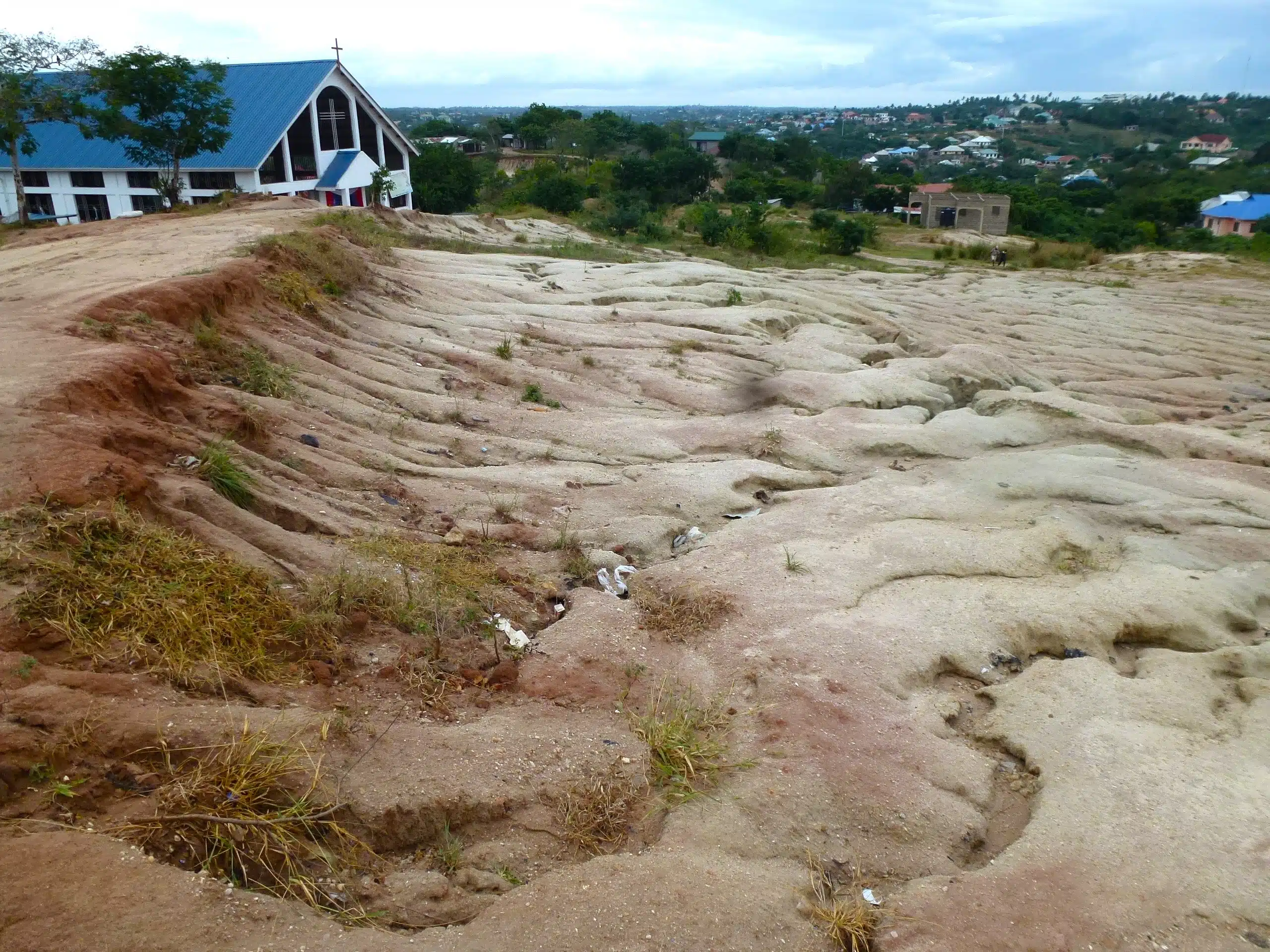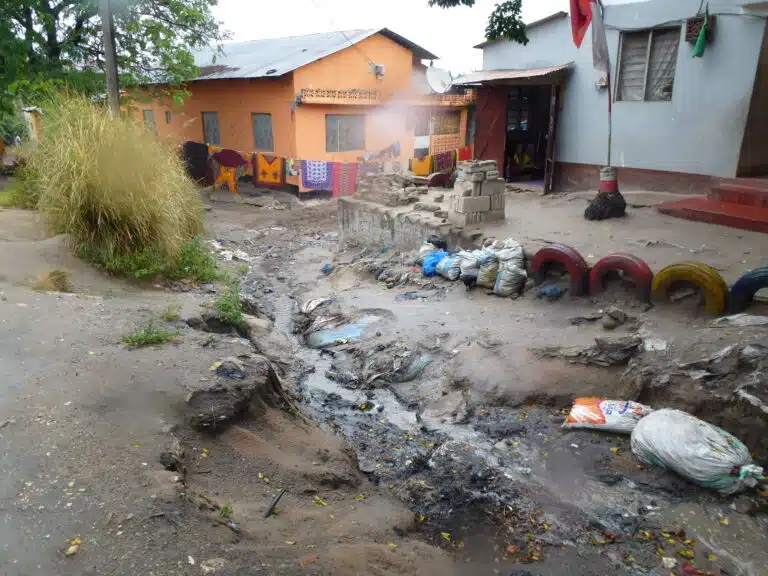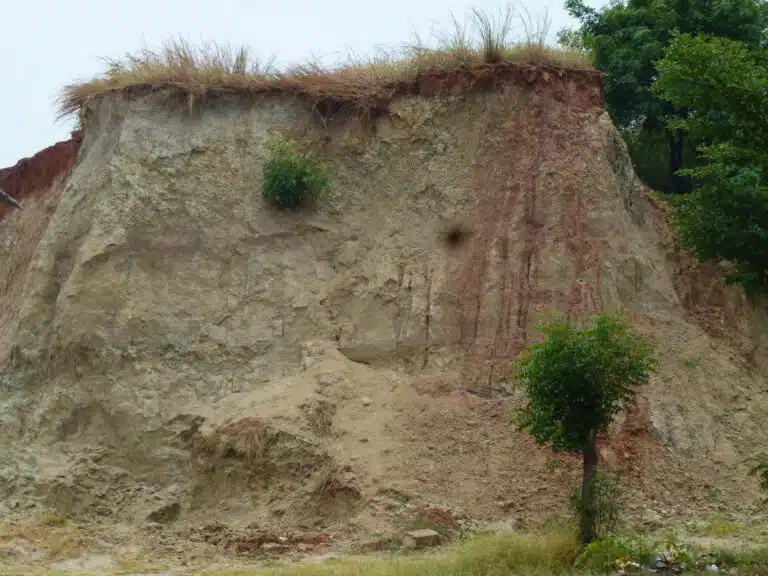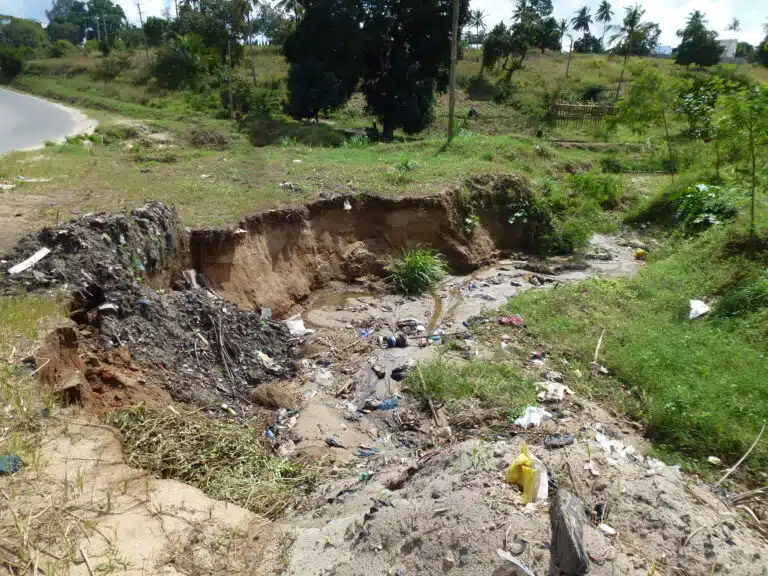Investigating sediment transport and risk
We conducted a comprehensive geomorphological assessment to identify sediment sources, transport dynamics and areas most vulnerable to erosion.
Data scarcity in the region required us to adopt innovative data capture approaches, combining collaborative fieldwork with remote sensing techniques. Partnering with the Humanitarian OpenStreetMap Team (HOT) and local universities, we designed and coordinated a field data collection mission. Using digital tools, we systematically recorded and analysed soil samples, creating a city-wide soil profile to support erosion and sediment modelling.
This collaborative approach enabled remote team coordination, rapid deployment of training and technical resources, and systematic data collection. It also established a scalable framework for future projects.
Alongside fieldwork, we applied remote sensing technology to map catchment-scale sediment pathways, analyse large-scale erosion processes and identify high-risk areas. Our findings reinforced the connection between land-use changes and increased sedimentation, highlighting the need for proactive interventions to mitigate these impacts.




